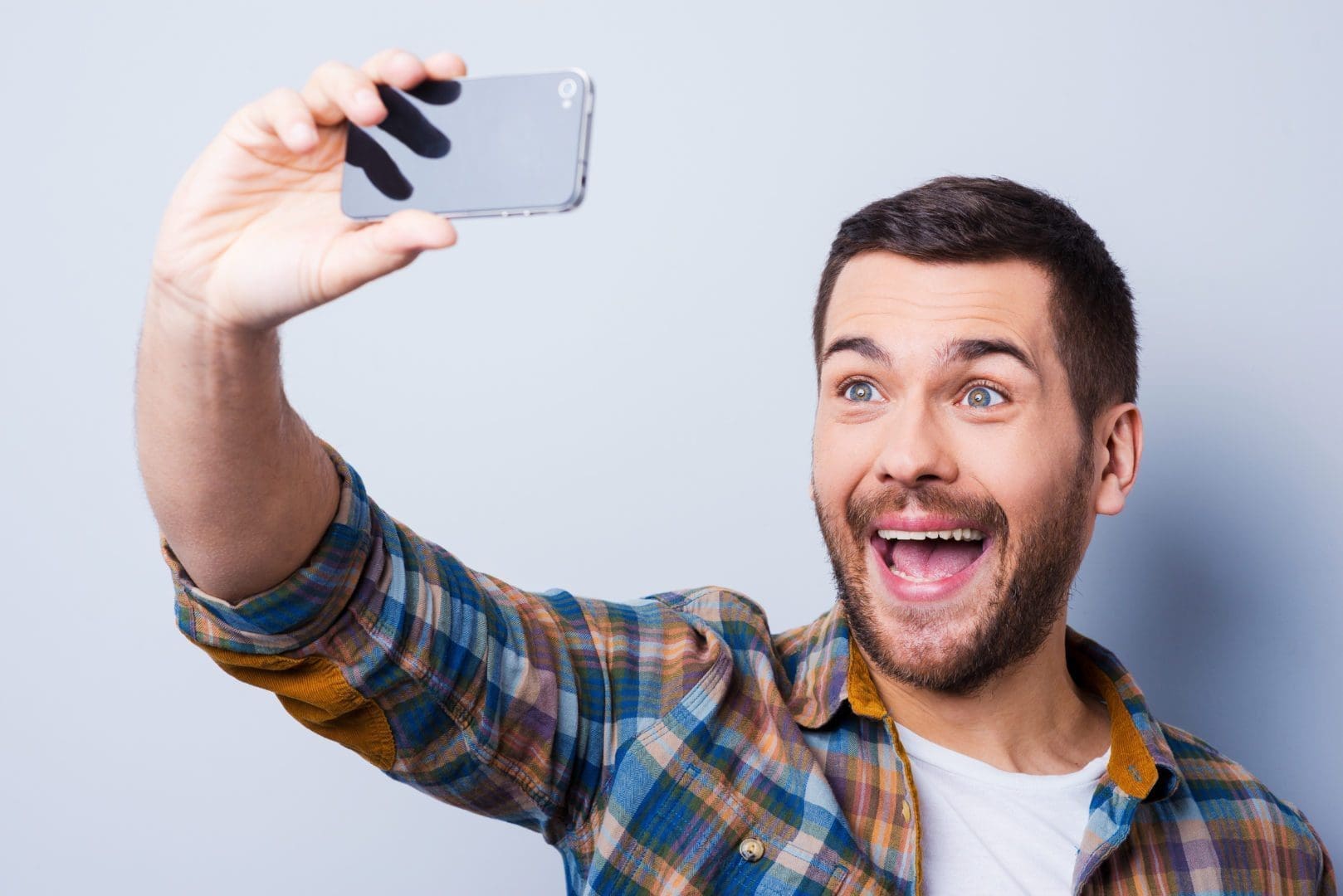As we know, technology is a powerful foundation for communication and has become more advanced and prevailing over the years. We often wonder on our research team how technology is affecting emerging adults (18-29 years old) relationship formation and satisfaction. After all, research suggests that although emerging adults are postponing marriage, the majority of this population still has a strong desire to tie the knot sometime in the future (e.g., Willoughby & James, 2017). As mentioned in earlier blog posts, technology is a gateway for relationship formation and has forever changed the pathways to how emerging adults are starting romantic relationships. According to the Pew Research Center, 86% of emerging adults use social media, and 92% of emerging adults own a smartphone (Smith, 2017). As a research team we have been carefully considering ways that social media, such as Snapchat, can impact romantic relationship formation. Other researchers have recently written about how Snapchat can play a role in romantic relationship formation (e.g., Velton & Arif, 2016).

Snapchat was launched in 2011 with the intention of giving smart phone users an app that allows users to send short videos and pictures. Since the emergence of the app, Snapchat boasts approximately 158 million users. On average, users spend about 25-30 minutes each day on Snapchat (Punyanunt-Carter, De La Cruz, & Wrench, 2017). The Snapchat sender is able to choose how long the viewer has to look at the picture, but once the picture is gone, it is gone! Unless of course, the viewer takes a screen shot. In that case the sender will be notified. At one point, Snapchat would generate how often a user is using the app to communicate with their friends. This created a “best friends” list. The users Snapchat friends would be able to see the top three friends. I can remember the problems that arose if you were in a romantic relationship and your romantic partner was not in your top best friends list.. oh boy, that would stir the pot! Where it gets a little confusing is, Snapchats are only seen for however long the sender decides, unless the receiver replays the Snapchat (which is only allowed one time within a 24 period) or if the snap is on the senders Snapchat story. A Snapchat story is the option to post a snap so that all of the users friends can see the snap for 24 hours. Snapchat updates frequently and adds new features to the app. Snapchat now has filters, location accessibility, and private chats. Currently, Snapchat does not have a public best friends list, but it is visible for the user. Snapchat has emoji icons which each have a different meanings next to the users names.
When you think of Snapchat, what do you think people are truly using the app for? As a college student myself, Snapchat is a prevalent way I communicate with friends and family. In my own experience, Snapchat is a good alternative to giving out my phone number. With a quick snapshot of my user name, bam! You are friends on Snapchat in an instant. I have known Snapchat as a risky arena for private conversation to take place, with virtually no evidence of that conversation ever happening. Hence the ghost logo! Spooky, right? Many people would consider Snapchat a secretive app, especially for those in a relationship, but is that what users are using Snapchat for?
Research on Snapchat
In a 2015 European study by Sonja Utz and colleagues, they found that 98.7% of Snapchat user utilizes the app to send funny things to their friends, 85.7% use it to send pictures of themselves, which is termed as a “selfie,” and only 13% of Snapchat users reported using the app for sexual purposes such as sexting. It seems as though Snapchat may be more personal (Vaterlaus et al., 2016). Research also indicated that young adults reported that they used Snapchat to keep in touch with family in friends. In fact, this was the second highest motivation for utilizing Snapchat (Vaterlous et al., 2016). For the most part, research suggests that Snapchat is used for content that is less serious (Vaterlaus et al., 2016). For example, sending funny pictures of ones self, or something silly going on around a person.
According to research published in 2016 by J. Mitchell Vaterlaus and colleagues, Snapchat is “reserved for their closest interpersonal relationships” (p. 598). Although Snapchat may be more personal, research does indicate that Snapchat users reported higher levels of jealousy if one partner is Snapchat friends with previous romantic partners or if their partner is in communication with another individual of the opposite sex (Vaterlaus et al., 2016). Because Snapchat pictures, videos and private chats virtually disappear, that may allow for extra-relational conversations without any evidence of a conversation taking place. This seems to create anxiety in one or both partners when they both partake in using Snapchat.

Vaterlaus et al., (2016) discovered four themes that through this research explaining the role Snapchat plays in relational challenges:
- Snapchat can become annoying
- Snapchat can lead to jealousy
- Snapchat can produce generational differences
- Snapchat can facilitate deviant behavior
Let’s break down a few of these themes to look a bit further into the role Snapchat may be playing in interpersonal relationships. It seems understandable that any app can get annoying, hence taking breaks from the app may be needed. But Snapchat users reported that if their Snapchat friends are not using the app accordingly, it becomes annoying. For example, if a user is sending excessive amount of Snapchat messages. Users also reported that if they felt like the receiver did not open a Snapchat in a reasonable amount of time, or if the receiver did not open it in general, this could cause tension in the relationship (Vaterlaus et al., 2016).
As indicated by Vaterlaus et al., (2016) in their second theme, Snapchat can result in individuals feeling jealous. As mentioned before, Snapchats virtually disappear after a certain amount of seconds and once the snap is gone, it cannot be retrieved. In this article, participants reported that jealously would also arise if their romantic partner’s best friend list did not include them. This was a clear indicator that their romantic partner was using Snapchat with other individuals more often than their partner. Although Snapchat research is still in its infancy, some research supports that Snapchat can potentially lead to fear, jealousy, and concern in relationships (Punyanunt-Carter et al., 2017).
Interestingly, there may be a generational gap in using Snapchat. Most of the users of Snapchat are emerging adults (18-29) but they reporting that sometimes their parents were willing and open to use the app. It seemed as though the participants may be frustrated if their parents used the app because they wouldn’t utilize Snapchat the same as the participants. This seemed to cause some tension in parent-child relationship as well. As one participant in the Vaterlaus et al., (2016) research study stated:
“My mom actually got Snapchat and she’s only friends with me and my sisters. She doesn’t even understand it. She’ll just send us selfies of herself and she wont say anything—it will just be a picture of herself. But like we’ll send her photos of like “Oh I’m eating” or something important that I’m doing…but she’ll send us selfies. Like she doesn’t understand” (p. 598).
To Snap or Not To Snap
Snapchat is incredibly relevant to our research, and we have found Snapchat to be the second most common form of communication (texting being the most common) used in just talking relationships. Could Snapchat play a role in commitment development in relationships? Perhaps. Snapchat may help reduce miscommunication because of the picture snaps (Vaterlaus et al., 2016) compared to standard text messages. Relationship challenges may arise and result in romantic partners feeling jealous, and even question the possibility of infidelity in their relationships. So, the question is to snap, or not to snap? If you choose to snap be intentional in your communication with others. Use Snapchat responsibility and decide don’t slide. Choose your partner carefully, and when you are committed, choose to give up other options.
References
- Punyanunt-Carter, N. M., De, L. C. J. J., & Wrench, J. S. (2017). Investigating the relationships among college students’ satisfaction, addiction, needs, communication apprehension, motives, and uses & gratifications with Snapchat. Computers in Human Behavior, 75, 870-875.
- Smith, A. (2017, January 12) Record shares of Americans now own smartphones, have home broadband. Pew Research Center.
- Vaterlaus, J. M., Barnett, K., Roche, C., & Young, J. A. (2016). “Snapchat is more personal”: An exploratory study on Snapchat behaviors and young adult interpersonal relationships. Computers in Human Behavior, 62, 594-601.
- Utz, S., Muscanell, N., & Khalid, C. (2015). Snapchat elicits more jealousy than Facebook: a comparison of Snapchat and Facebook use. Cyberpsychology, Behavior and Social Networking, 18, 3, 141-6.
- Velten & Arif (2016). The influence of Snapchat on interpersonal relationship development and human communication. The Journal of Social Media in Society 5, 2, 5-43.
- Willoughby, B. J., & James, S. L. (2017). The marriage paradox: Why emerging adults love marriage yet push it aside. New York, NY: Oxford University Press.
Hi my name is Taylor Lupo. I am a first year graduate student in the Marriage and Family Therapy Program at NIU. I love to hang out with my friends and golf in my free time. I also enjoy cooking and learning new dishes to make. I hope to continue to write blog posts, writing on future publications and being involved with future research surveys and focus groups!









